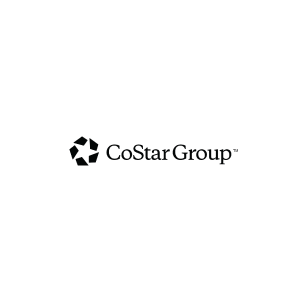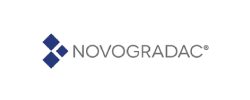OZ LEGISLATION TRACKING
On July 4, 2025, President Trump signed H.R. 1 into law, permanently extending the Opportunity Zone (OZ) program and introducing several reforms under what is commonly referred to as “OZ 2.0.” The legislation creates a new framework for future OZ investments starting in 2027, while maintaining the current OZ map through the end of 2026.
Below, we've compiled a comprehensive timeline of updates, along with curated articles, blogs, and podcasts from leading industry voices. These resources capture the key developments, implications of the finalized legislation, and what the future of Opportunity Zones will look like moving forward.
TRUMP SIGNED OZ 2.0 INTO LAW
On July 4, 2025, President Trump officially signed the One Big Beautiful Bill into law, solidifying the Opportunity Zone program as a permanent part of federal policy. With this enactment, the OZ 2.0 provisions are now in effect.
Key OZ 2.0 Provisions Included In H.R. 1:
-
Permanent status. Opportunity Zone policy is no longer sunset-dated. It will become a standing component of the Internal Revenue Code.
-
Rolling five-year gain deferral. Any qualifying gain invested into an OZ fund after December 31, 2026 receives a five-year deferral.
-
New basis step-up schedule. Standard Qualified Opportunity Fund (QOF) investors receive a 10 percent basis step-up after five years; Qualified Rural Opportunity Fund (QROF) investors receive 30 percent.
-
Additional rural incentives. Rural OZ tracts (defined as areas outside cities or towns of 50,000 people or contiguous urbanized areas) also enjoy a lower 50 percent substantial-improvement threshold, versus the usual 100 percent.
-
Zone re-designations every decade. Governors must select new zones every 10 years starting July 1, 2026. New zones will go into effect every 10 years starting January 1, 2027.
-
Tighter census tract criteria. The “low-income community” threshold falls from 80 percent to 70 percent of area or statewide median family income, and the non-low-income contiguous tract exception disappears. Also of note, the special rule for Puerto Rico is stricken from the statute. The island loses its blanket designation, and now may only select up to 25 percent of eligible tracts, just like all other states.
-
Expanded reporting requirements that finally cleared Senate parliamentarian review, promising greater transparency for funds and investors
THE U.S. HOUSE OF REPRESENTATIVES PASSED H.R. 1, THE ONE BIG BEAUTIFUL BILL, WHICH WILL MAKE OPPORTUNITY ZONES PERMANENT

On July 3, 2025, the U.S. House of Representatives narrowly passed H.R. 1, the One Big Beautiful Bill, by a vote of 218–214, officially making the Opportunity Zone program permanent. Notably, all OZ 2.0 provisions were preserved in the final version.
Key OZ 2.0 Provisions Included In H.R. 1:
-
Permanent status. Opportunity Zone policy is no longer sunset-dated. It will become a standing component of the Internal Revenue Code.
-
Rolling five-year gain deferral. Any qualifying gain invested into an OZ fund after December 31, 2026 receives a five-year deferral.
-
New basis step-up schedule. Standard Qualified Opportunity Fund (QOF) investors receive a 10 percent basis step-up after five years; Qualified Rural Opportunity Fund (QROF) investors receive 30 percent.
-
Additional rural incentives. Rural OZ tracts (defined as areas outside cities or towns of 50,000 people or contiguous urbanized areas) also enjoy a lower 50 percent substantial-improvement threshold, versus the usual 100 percent.
-
Zone re-designations every decade. Governors must select new zones every 10 years starting July 1, 2026. New zones will go into effect every 10 years starting January 1, 2027.
-
Tighter census tract criteria. The “low-income community” threshold falls from 80 percent to 70 percent of area or statewide median family income, and the non-low-income contiguous tract exception disappears. Also of note, the special rule for Puerto Rico is stricken from the statute. The island loses its blanket designation, and now may only select up to 25 percent of eligible tracts, just like all other states.
-
Expanded reporting. Transparency measures, written to satisfy Byrd-rule tests, kick in for tax years beginning in 2027.
SENATE PASSES OZ 2.0 LEGISLATION
The U.S. Senate passed H.R. 1, the One Big Beautiful Bill on July 1, 2025, which will make Opportunity Zones permanent. The bill now returns to the House for a final vote before it can be signed into law by President Trump.
After a nearly 12-hour session, the House Rules Committee moved the bill forward, clearing it for debate on the House floor.
Key OZ 2.0 Provisions Included In H.R. 1:
-
Permanent status. Opportunity Zone policy is no longer sunset-dated. It will become a standing component of the Internal Revenue Code.
-
Rolling five-year gain deferral. Any qualifying gain invested into an OZ fund after December 31, 2026 receives a five-year deferral.
-
New basis step-up schedule. Standard Qualified Opportunity Fund (QOF) investors receive a 10 percent basis step-up after five years; Qualified Rural Opportunity Fund (QROF) investors receive 30 percent.
-
Additional rural incentives. Rural OZ tracts (defined as areas outside cities or towns of 50,000 people or contiguous urbanized areas) also enjoy a lower 50 percent substantial-improvement threshold, versus the usual 100 percent.
-
Zone re-designations every decade. Governors must select new zones every 10 years starting July 1, 2026. New zones will go into effect every 10 years starting January 1, 2027.
-
Tighter census tract criteria. The “low-income community” threshold falls from 80 percent to 70 percent of area or statewide median family income, and the non-low-income contiguous tract exception disappears. Also of note, the special rule for Puerto Rico is stricken from the statute. The island loses its blanket designation, and now may only select up to 25 percent of eligible tracts, just like all other states.
-
Expanded reporting. Transparency measures, written to satisfy Byrd-rule tests, kick in for tax years beginning in 2027.
SENATE UPDATES ITS DRAFT VERSION OF THE 2025 TAX BILL
On June 28, 2025, the Senate released an updated draft of the 2025 tax bill (pgs. 426-456) featuring newly revised proposals to reform the Opportunity Zone program:
Key Highlights:
- Permanent Structure: The program would shift to a recurring 10-year designation cycle. Newly certified census tracts would take effect on July 1, 2026, with investments allowed starting January 1, 2027.
- Revised Basis Adjustment: Investors who hold Qualified Opportunity Fund (QOF) investments for at least five years would receive a 10% step-up in basis on deferred gains. For those investing in Qualified Rural Opportunity Funds, the basis increase would be 30%.
- End of Deferral Period: For capital gains invested after December 31, 2026, the deferred gain must be recognized at the earlier of either the investment’s sale or December 31, 2033. Additionally, a new 10-year recognition window would begin for each tranche of investment.
- Modified Substantial Improvement Rule: For rural opportunity funds, a property would be considered substantially improved if the investment equals or exceeds 50% of its original cost basis—down from the current 100% threshold.
- Stricter Eligibility Criteria: To qualify, tracts must now have a median family income below 70% of the area’s average, a drop from the previous 80%. Eligibility for contiguous tracts would be eliminated, and Puerto Rico’s authority to designate OZs would sunset at the end of 2026.
SENATE UNVEILS ITS DRAFT VERSION OF THE 2025 TAX BILL
On June 16, 2025, the Senate released its draft of the 2025 tax bill, incorporating significant proposed changes to the Opportunity Zone (OZ) program (pgs. 199-229) initially introduced by the House.
Key Highlights:
- OZ permanence, with decennial OZ cycles. New zones every 10 years, each with a fixed 10-year life and gain recognition date. The first redetermination date is set for July 1, 2026, with subsequent reviews every 10 years.
- Revised basis step-up schedule. An annual basis step-up accrual model (1% + 1% + 1% + 2% + 2% + 3%) replaces the old 5- and 7-year cliffs.
- Rural OZ boost. A 3× basis multiplier and relaxed improvement test for rural-focused QOFs. Max basis step-up of 30% for Rural QOF investors.
- Tighter eligibility rules for zone designation. New low-income community definition (≤ 70% MFI) and elimination of the “contiguous tract” rule could sharply reduce qualifying areas.
THE HOUSE PASSES THE "ONE BIG BEAUTIFUL BILL"
On May 22, 2025, the House passed the Trump Tax Legislation, which includes significant updates to the Opportunity Zone (OZ) program as part of the broader 2025 tax bill.
Key Highlights:
- Current OZ designations end December 31, 2026.
- A new round of OZs will launch in 2027, with at least 33% located in rural areas.
- Post-2026 investments may qualify for:
- 10% basis step-up after 5 years
- 30% step-up for rural-focused OZ funds
- The 10-year federal tax-free exit on any fund profits remains intact.
- New reporting requirements aim to bring greater transparency to OZ investments.
OZ Legislation News

July 15, 2025
Read More
July 10, 2025
Read More
July 4, 2025
Read More
July 3, 2025
Read More
July 3, 2025
Read More
July 1, 2025
Read More
July 1, 2025
Read More
July 1, 2025
Read More
June 30, 2025
Read More
June 28, 2025
Read More
June 17, 2025
Read More
June 17, 2025
Read More
May 22, 2025
Read More
May 22, 2025
Read More
May 20, 2025
Read More
May 18, 2025
Read More
May 16, 2025
Read More
May 13, 2025
Read More
May 12, 2025
Read More
May 12, 2025
Read More
April 16, 2025
Read More
March 4, 2025
Read More
March 3, 2025
Read More
March 3, 2025
Read More
February 24, 2025
Read More
February 11, 2025
Read More
February 4, 2025
Read More
January 9, 2025
Read MorePodcasts

July 4, 2025
LISTEN HERE
July 1, 2025
LISTEN HERE
June 25, 2025
LISTEN HERE
June 23, 2025
LISTEN HERE
June 2, 2025
LISTEN HERE
May 27, 2025
LISTEN HERE
May 13, 2025
LISTEN HERE
April 29, 2025
LISTEN HERE
April 7, 2025
LISTEN HERE
March 31, 2025
LISTEN HERE
March 12, 2025
LISTEN HERE
March 3, 2025
LISTEN HERE.png?width=2991&height=762&name=UrbanCatalyst_Horizontal%20Logo_Blue%20w%20Dk%20Blue%20(RGB).png)



.jpg?width=284&height=368&name=Senate%20OZ%20Legislation%20(Updated).jpg)
.jpg?width=307&height=397&name=Senate%20OZ%20Legislation%20(Page%201).jpg)
